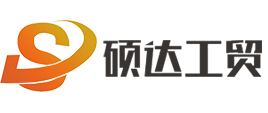- Position:
- HOME >
- NEWS >
- Industry News >
- Steel prices continue to rise in December is difficult >
Steel prices continue to rise in December is difficult
Since November, the steel market as a whole out of the market prices rose sharply, the price of a number of steel varieties rose up to 10%. The remarkable feature of this round of rise is a large, wide-ranging, synchronized rise in the period, belonging to the typical "momentum". This round of rise and the steel market in June, July this year, the rise is different, the former cost-driven, while this round of rise is demand-driven. Demand-driven performance in several ways: First, the early rainy season delayed the release of demand is now released, the second is the manufacturing industry and other downstream industries still have to catch up with the demand, the third is the incremental demand inspired by the rise in steel prices.
At the same time, the cost of steel remains high, coke prices have achieved 7 rounds of increases, tons of coke profit has exceeded the profit of tons of steel, the price of imported iron ore once back to 130 U.S. dollars / ton. This makes the willingness of steel mills to raise prices of finished products more urgent and strong. Based on this, the spot market performance than the futures market is more intense, contributing to the expansion of the basis difference. However, the futures market is also "not willing to show weakness", hit a new high since the beginning of this year.
The problem is that now has entered the second half of November, the spot market has appeared to stop the phenomenon, the next market will also face the cold weather, demand reduction, "winter storage" operation, futures contracts for the month and many other issues, the market in December can maintain such a rising trend? I believe that this needs to be comprehensively considered from the following aspects.
First, the fundamentals of supply and demand will change. To be sure, although the environmental protection production restrictions have a certain impact on the regional market, but the actual impact on the total national production is not large. Industry statistics show that last week (November 16 to 20), the national blast furnace operating rate (163 sample steel mills) reached 62.27%, a week-on-week decline of 0.13%; Hebei Tangshan region, the capacity utilization rate of steel mills reached 80.63%, a week-on-week decline of 1.67%. However, the five major steel varieties production reached 10.75 million tons, an increase of 67,000 tons week-on-week, of which construction steel production fell 60,600 tons week-on-week, plate production increased 127,600 tons week-on-week. In addition, the National Bureau of Statistics data show that in October the national crude steel production reached 92.202 million tons, although a slight decline, but still up 12.7% year-on-year. According to this judgment, in the case of late demand is difficult to grow significantly, the market fundamentals of supply and demand relationship or will be "weak supply and demand" to "strong supply and weak demand".
Second, the speed of inventory slowdown, steel stocks in December or will increase. Since November, the market to inventory speed up, from a single week down 800,000 tons to down 1.5 million tons, and then down 900,000 tons. The main reasons for the acceleration of the speed of inventory removal are as follows: First, the price is rising, the futures market performance is strong to bring the psychological stimulus; Second, the manufacturing downstream enterprises still exist to catch up with the demand for construction steel demand continues to exceed expectations.
However, from the construction steel turnover data, last Monday (November 16) hit more than 300,000 tons of sizable data, followed by four days of turnover are within 220,000 tons, a larger decline. From the north-south differences in demand for construction steel, demand in northern China relative to September has been in a downward trend, Hebei Xiongan New Area purchases have never been able to exceed the average level of a single month in the third quarter of this year. With the later low temperature, rain and snow increase, demand release gradually weakened, to slow down the speed of inventory is the probability of things. I expect that steel stocks will start to increase in mid-December. At present, rebar stocks are still much higher compared with the same period last year, and it is expected that by the end of this year it will be difficult to fall to the same level last year.
Third, the main futures contract to move to the month, will bring volatility to the spot market trend. Behind the futures prices pull up, more reflect the driving force of capital. The most obvious is coke futures, 1 month time rose 500 yuan / ton, a record high in nearly 3 years, and the spot to form a significant appreciation. With the main contract shifted to the month, price fluctuations will be more obvious, the speed of change in the market will be accelerated, which will affect the spot market in terms of mood and mentality.
In short, although the current steel prices are at a high level since the beginning of this year, but still need to observe the high price of the market demand-side acceptance, as well as market turnover, steel inventory changes, futures funds game and mindset and other factors. I believe that in December, steel prices continue to rise more difficult, high volatility is inevitable, but steel prices do not have the conditions for a sharp decline.
(Responsibility: Mo Jinghan)


